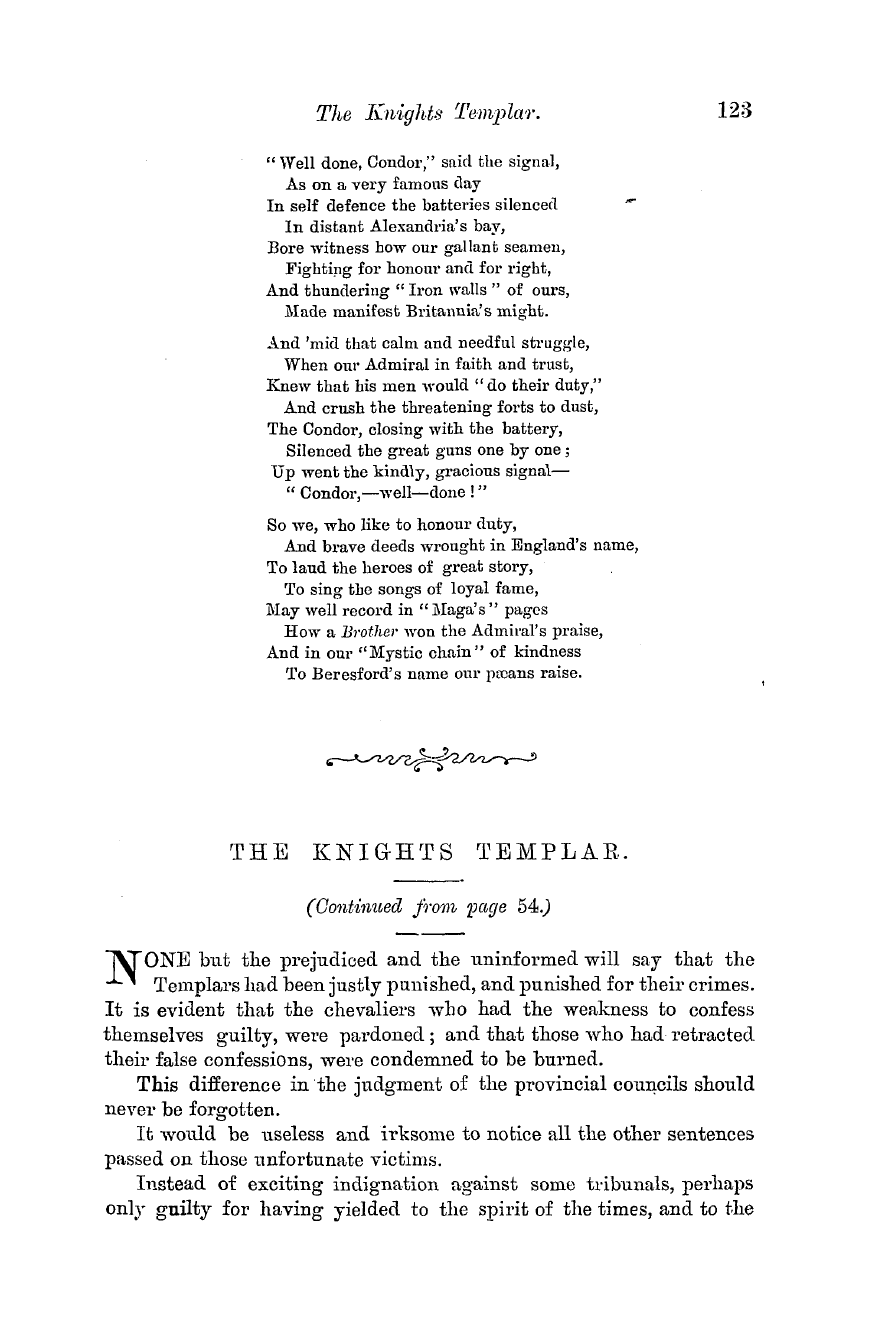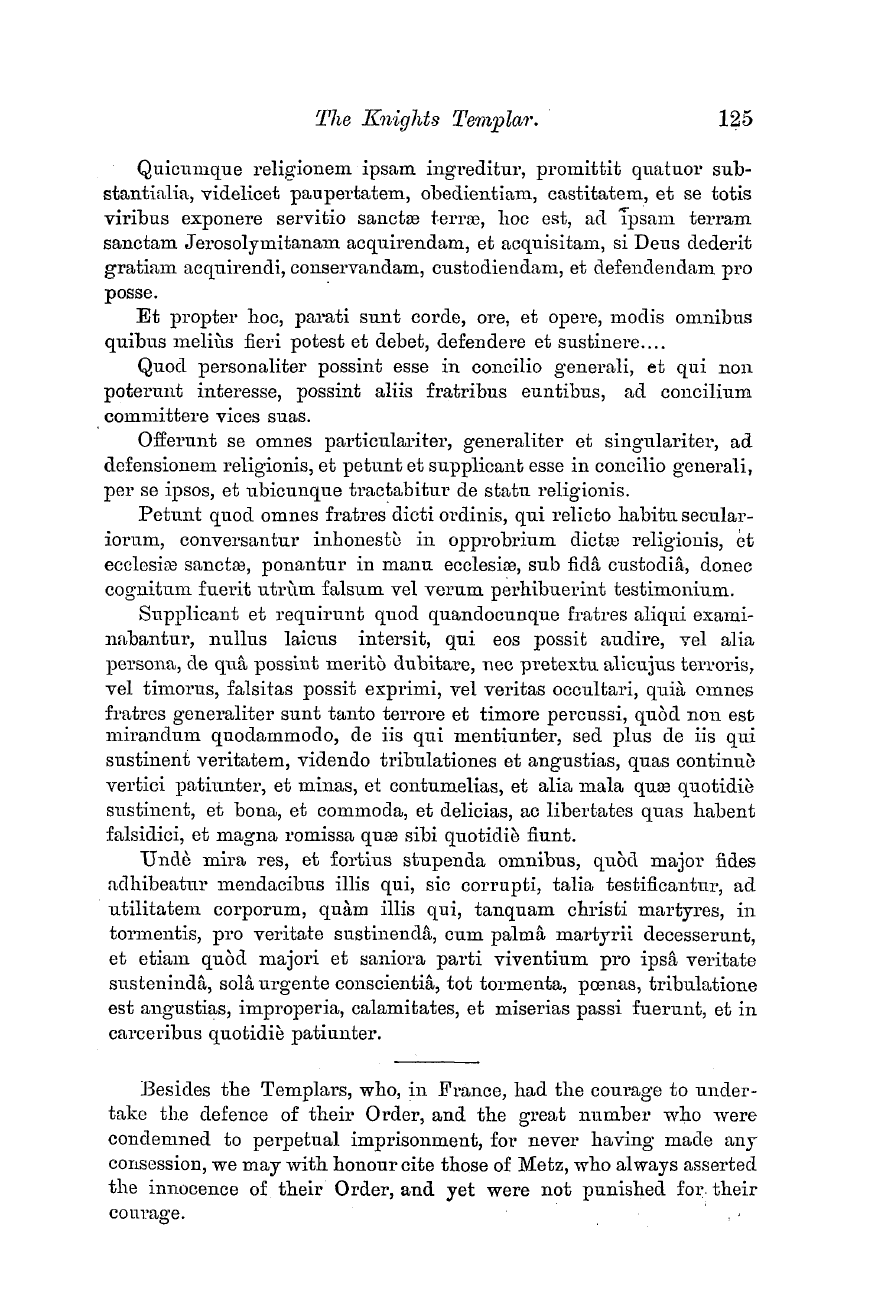Note: This text has been automatically extracted via Optical Character Recognition (OCR) software.
The Legend Of The Introduction Of Masons Into England.
they built a strong stone wall from sea to sea , in a straight line between the towns that had been there built for fear of the enemy , and not far from the trench of Severus . This famous wall , which is still to be seen , was built at the public and private expense , the Britons also lending their assistance . It is eight feet in breadth , and twelve in height , in a
straig ht line from east to west , as is still visible to beholders . This being finished they gave the dispirited people good advice , with patterns to furnish them with arms . Besides , they built towers on the seacoast to the southward , at proper distances , where their ships were , "because there also the irruptions of the barbarians were apprehended ,
and so took leave of their friends never to return again . " Another casual mention of the stone wall built by the Romans occurs Book III , cap . ii , p . 122 . Here are three dates given : A . D . 407 , for the rampart of turves , with the ditch made by Severus ; A . D . 414 , a turf rampart built by the Britons ; and finally the stone wall built by the Romans about A . D .
416 ; the two last being after the third seige and sack of Rome ; but whether it is possible or likely that the Romans , owing to the bad state of their OAVU affairs , could send legions to help the Britons has been argued and discussed many times , for example in Bruce ' s Roman Wall , and the Lapidarium Septentrionale , & c . It is not , however , so
much as historical facts that I am dealing with these isolated mentions , of masonry , but as legends and traditions believed and accepted as history at a certain date , by Beda , 672-735 , and repeated by others , ending with Stow in 1720 , when there existed certainly at the latter date , and for 160 years previously , another and independent legend ,
for which no authority is forthcoming . Indeed , with regard to the truth of the Masonic legend of St Alban , I feel almost inclined to adopt the words of William of Newburgh , the Chronicler , when writing of Geoffrey of Monmouth : " Therefore , let Beda , of whose wisdom and integrity none can doubt , possess our unbounded confidence , and let this fabler , with his fictions , be instantly rejected by all . "
Note: This text has been automatically extracted via Optical Character Recognition (OCR) software.
The Legend Of The Introduction Of Masons Into England.
they built a strong stone wall from sea to sea , in a straight line between the towns that had been there built for fear of the enemy , and not far from the trench of Severus . This famous wall , which is still to be seen , was built at the public and private expense , the Britons also lending their assistance . It is eight feet in breadth , and twelve in height , in a
straig ht line from east to west , as is still visible to beholders . This being finished they gave the dispirited people good advice , with patterns to furnish them with arms . Besides , they built towers on the seacoast to the southward , at proper distances , where their ships were , "because there also the irruptions of the barbarians were apprehended ,
and so took leave of their friends never to return again . " Another casual mention of the stone wall built by the Romans occurs Book III , cap . ii , p . 122 . Here are three dates given : A . D . 407 , for the rampart of turves , with the ditch made by Severus ; A . D . 414 , a turf rampart built by the Britons ; and finally the stone wall built by the Romans about A . D .
416 ; the two last being after the third seige and sack of Rome ; but whether it is possible or likely that the Romans , owing to the bad state of their OAVU affairs , could send legions to help the Britons has been argued and discussed many times , for example in Bruce ' s Roman Wall , and the Lapidarium Septentrionale , & c . It is not , however , so
much as historical facts that I am dealing with these isolated mentions , of masonry , but as legends and traditions believed and accepted as history at a certain date , by Beda , 672-735 , and repeated by others , ending with Stow in 1720 , when there existed certainly at the latter date , and for 160 years previously , another and independent legend ,
for which no authority is forthcoming . Indeed , with regard to the truth of the Masonic legend of St Alban , I feel almost inclined to adopt the words of William of Newburgh , the Chronicler , when writing of Geoffrey of Monmouth : " Therefore , let Beda , of whose wisdom and integrity none can doubt , possess our unbounded confidence , and let this fabler , with his fictions , be instantly rejected by all . "































































